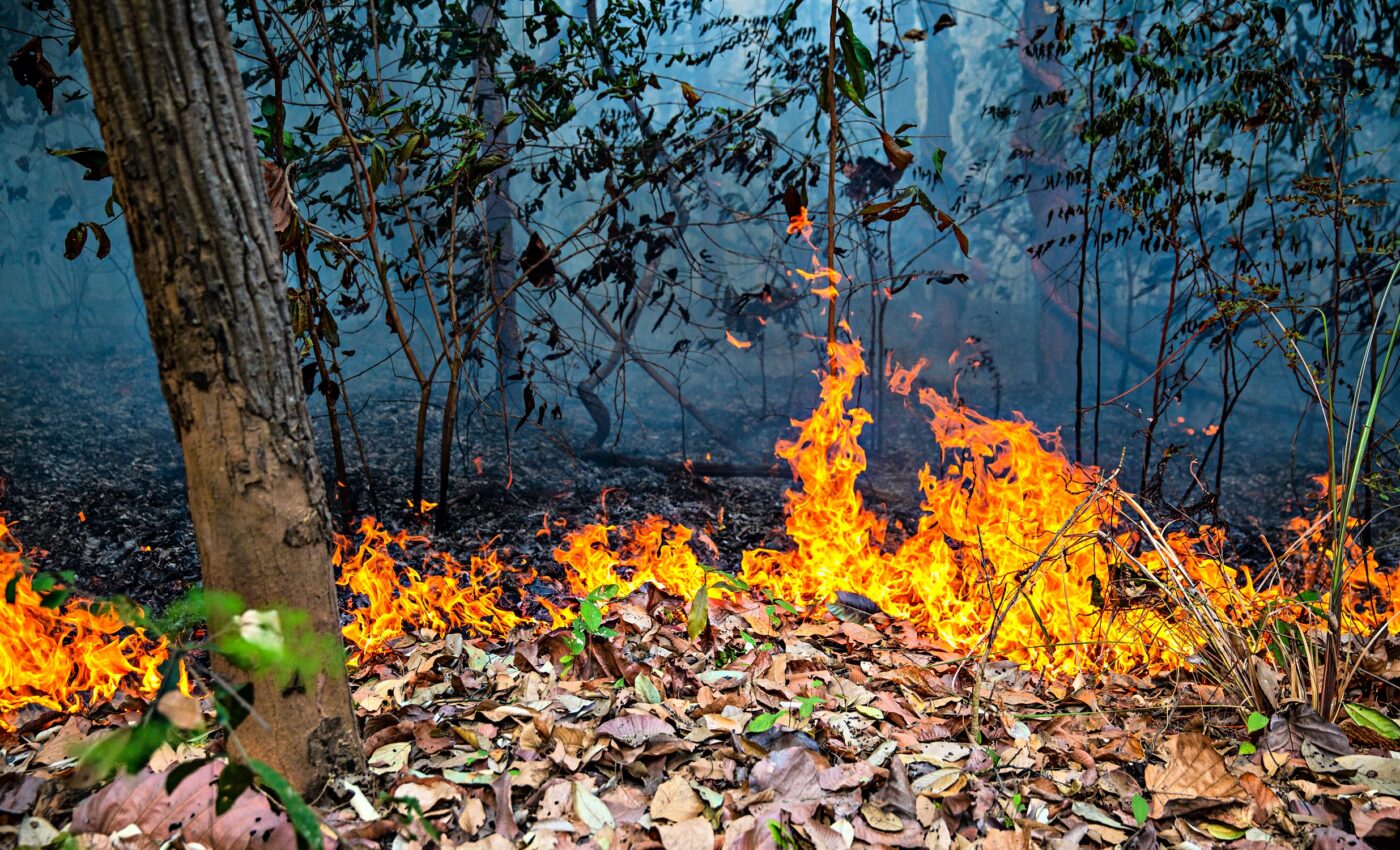
Wildfires in old-growth Amazon forests increased by 152% in 2023
The Amazon rainforest, often hailed as the “lungs of the Earth,” is facing a dire threat from an unexpected source: wildfires raging through its untouched, old-growth forests. Despite a decrease in deforestation rates in 2023, a new survey reveals a staggering 152% increase in these devastating fires compared to the previous year.
Paradoxical problem of Amazon wildfire
While deforestation in the Brazilian Amazon has decreased, the escalating threat of wildfires presents a significant and multifaceted obstacle. This situation challenges the region’s environmental well-being, highlighting the complexity of maintaining ecosystem health amid changing climate conditions.
The sharp increase in wildfires is particularly alarming as it predominantly affects untouched, old-growth forests. These areas have historically been spared from such extensive destruction. This represents a significant and worrying shift in the ecological balance of the region. Such changes threaten the stability and health of these critical ecosystems, which have long been preserved.
A comprehensive study, utilizing detailed satellite imagery analysis, revealed a staggering increase in forest wildfires from 13,477 in 2022 to 34,012 in 2023. This dramatic surge is primarily attributed to the prolonged drought conditions plaguing the region, highlighting the interconnectedness of environmental factors and the need for comprehensive strategies to mitigate the complex interplay of deforestation, drought, and fire.
The escalating frequency and intensity of wildfires not only threaten the Amazon’s biodiversity and carbon storage capacity but also jeopardize the livelihoods of local communities and indigenous populations who depend on the forest for their sustenance and cultural heritage.
Drought and the domino effect
The Amazon region has been grappling with increasingly frequent and prolonged dry spells. Past droughts in 2010 and 2015-16 had already left the forest more susceptible to fire, causing fragmentation of the plant cover. The ongoing drought, which began last year, has only exacerbated this vulnerability.
“Climate change is a key driver of the increase in forest fires, and El Niño has also added risk owing to its links with the prolonged drought in the region,” noted IBAMA/PREVFOGO, the National Center for Forest Fire Fighting and Prevention.
The first three months of 2023 alone witnessed 7,861 wildfires in the Amazon, surpassing the figures for any of the previous eight years. This disturbing trend highlights the urgency of the situation.
Amazon wildfire’s fiery footprint
The geographical distribution of these fires is a critical factor in understanding their impact and devising appropriate responses.
“It’s important to understand the geographic pattern of these fires. Each of the areas concerned requires a different response. Our analysis pointed to more fires in old-growth forest areas than in previous years, which is alarming not just because of the loss of vegetation, which is invariably followed by deforestation, but also because the carbon stored by the forest becomes carbon emissions when it burns,” said Guilherme Augusto Verola Mataveli, corresponding author of the article and a remote sensing specialist with INPE’s Earth Observation and Geoinformatics Division.
The research highlights a worrisome trend of increased fire activity within the Amazon’s old-growth forests. These ancient, untouched ecosystems are particularly susceptible to the detrimental impacts of wildfires due to their significant carbon storage capacity.
When forests in the Amazon burn, they release large amounts of stored carbon into the atmosphere. This release significantly contributes to the climate crisis by increasing greenhouse gas emissions. The frequent occurrence of these wildfires poses a serious threat to the Amazon’s unique biodiversity and ecological balance. Additionally, it exacerbates the global challenge of addressing and mitigating the effects of climate change.
“Old-growth forest stores larger amounts of carbon, which becomes greenhouse gas emissions when it burns, contributing to climate change,” said Mataveli. “Another negative effect relates to public health problems. In October 2023, Manaus [the capital of Amazonas state] had the worst air quality of any city in the world bar one.”
Ripple effects and dire consequences
The repercussions of wildfires in old-growth forests extend far beyond the immediate loss of vegetation and carbon emissions. The fires also weaken the forest’s resilience by impairing its ability to maintain a humid microclimate that is crucial for its survival.
The microclimate under the forest canopy helps to contain and recycle moisture throughout the ecosystem. When this climate diminishes, it compromises the health and sustainability of the forest.
Furthermore, the escalating threat of wildfires poses challenges for traditional subsistence farmers who rely on controlled burns as a land management practice. The uncontrolled spread of fire disrupts their livelihoods and threatens their way of life.
Amazon’s future: A call for urgent action
The escalating crisis in the Amazon calls for immediate and concerted action. Researchers involved in the study stress the need for a multifaceted approach, including increased command-and-control operations, better-equipped fire brigades, and continuous improvement of monitoring systems.
“The Amazon is becoming more vulnerable environmentally, socially and economically as time passes without effective solutions to the fire problem,” said Luiz Aragão, the leader of the research group.
As the Amazon burns, the fate of this invaluable ecosystem hangs in the balance, and the consequences of inaction are too dire to contemplate. The time to act is now, before the flames consume the very lungs of our planet.
The study is published in the journal Global Change Biology.
—–
Like what you read? Subscribe to our newsletter for engaging articles, exclusive content, and the latest updates.
Check us out on EarthSnap, a free app brought to you by Eric Ralls and Earth.com.
—–













